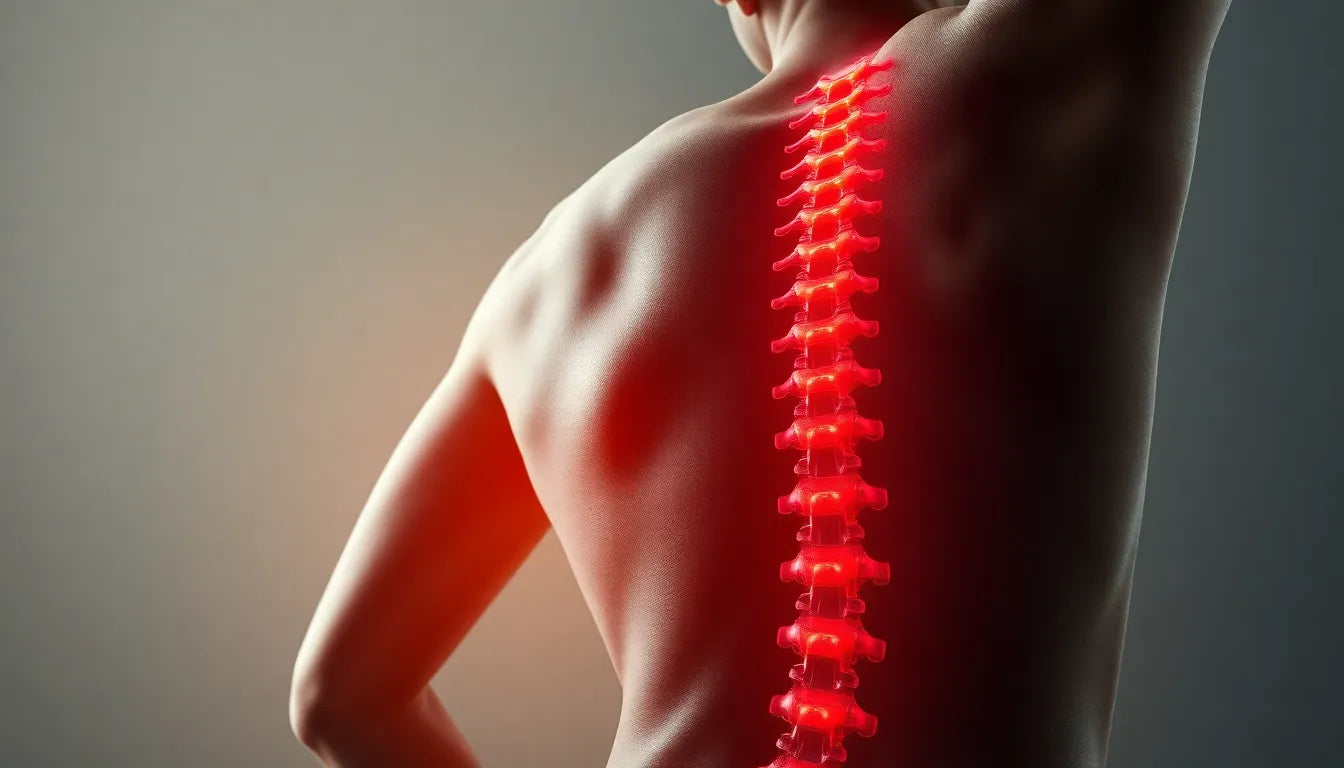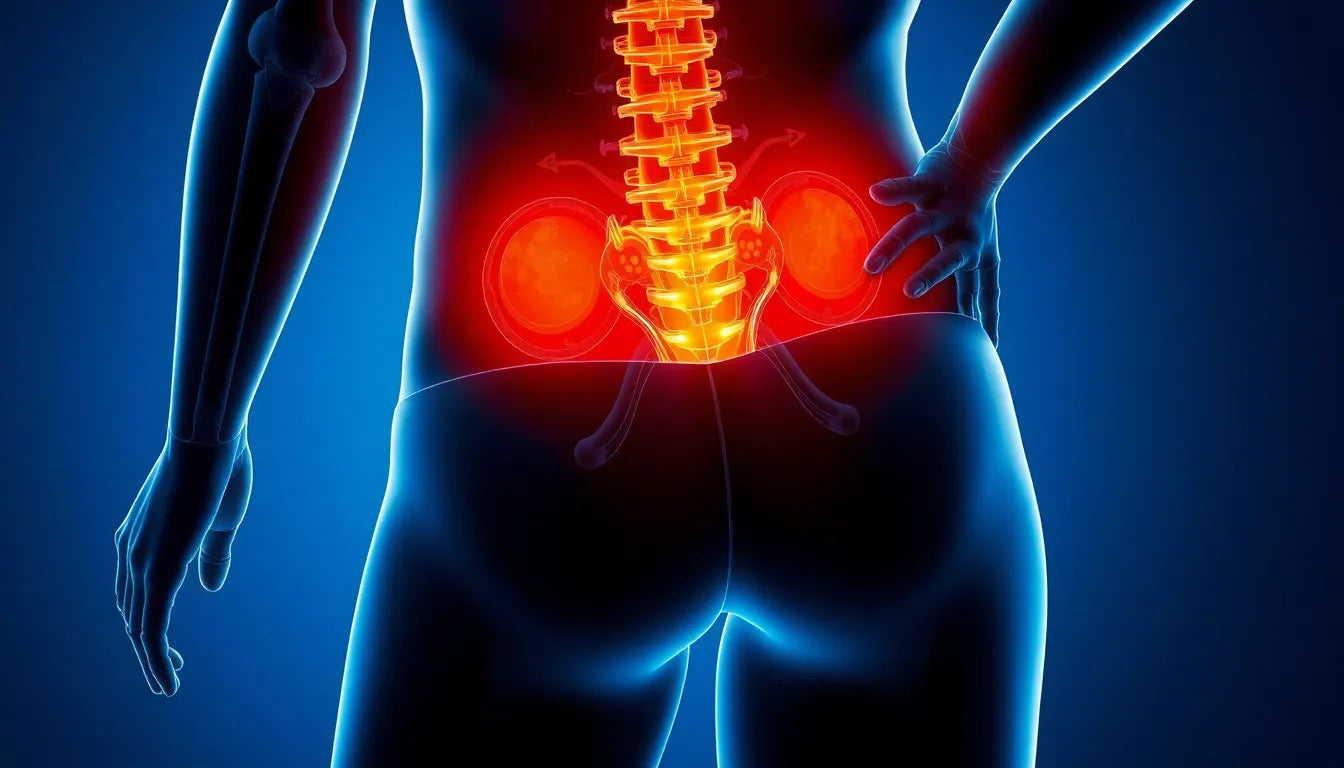When groin pain strikes, many people immediately think of issues related to urological or soft tissue problems. However, what if the real cause of your discomfort lies in an unexpected place—your spine? Specifically, a herniated disc in the upper lumbar region, such as at L1-L2, could be the hidden culprit behind your groin pain. This connection is often overlooked, leading to misdiagnosis and ineffective treatments.
understanding the unexpected connection
Groin pain as a symptom of a herniated disc is not commonly recognized. Most people associate herniated discs with back or leg pain, but when the injury occurs in the upper lumbar spine, it can affect nerves that refer pain to the groin. This atypical symptom can be confusing and is frequently misinterpreted as stemming from more common issues like urological conditions or soft tissue injuries.
The misconception that groin pain is solely related to these issues often leads to a prolonged search for relief without addressing the root cause. This begs the question: Could your persistent groin pain actually be linked to a spinal issue? Understanding this connection is crucial for accurate diagnosis and effective treatment.
prevalence and misdiagnosis
Groin pain related to herniated discs is not only uncommon but also frequently misdiagnosed. Many healthcare providers may not immediately consider a spinal issue when diagnosing groin pain, leading to treatments that do not address the underlying problem. This oversight can result in ongoing discomfort and frustration for patients seeking relief.
Accurate diagnosis is essential and often requires a combination of advanced imaging techniques and thorough clinical assessments. While imaging like MRI scans can reveal herniated discs, they must be interpreted alongside a detailed patient history and physical examination to pinpoint the true source of the pain. This comprehensive approach helps avoid the pitfalls of misdiagnosis and sets the stage for more effective treatment strategies.
In conclusion, if you are experiencing persistent groin pain, it may be worth considering a spinal evaluation. Understanding the potential link between herniated discs and groin pain can lead to more accurate diagnoses and ultimately, more effective treatments. As we delve deeper into the anatomy of pain and the challenges of diagnosis, we will explore how herniated discs can affect the groin and the steps you can take to manage this condition effectively.
the anatomy of pain: how herniated discs affect the groin
Understanding the anatomy of the lumbar spine is crucial to grasp how herniated discs can lead to groin pain. The lumbar spine consists of five vertebrae, labeled L1 through L5. When a disc herniates, it can impinge on nearby nerves. Specifically, herniations at the L1-L2 level can affect nerves that extend towards the groin area. These nerves, when compressed, can send pain signals to the groin, mimicking more common groin-related issues.
To visualize this, imagine a diagram where each lumbar disc level is associated with specific referred pain areas. For instance, while L4-L5 and L5-S1 herniations often cause leg or lower back pain, an L1-L2 herniation can uniquely manifest as groin pain. This anatomical relationship underscores the importance of considering spinal causes in unexplained groin discomfort.
symptoms and diagnostic challenges
Identifying herniated disc-related groin pain involves recognizing a set of symptoms that may include sharp, shooting pain, tingling, numbness, and even weakness in the legs. These symptoms can vary in intensity and may worsen with certain movements or postures. However, diagnosing the true source of groin pain remains a significant challenge.
Many conditions can mimic the symptoms of a herniated disc, leading to potential misdiagnosis. A thorough clinical evaluation is essential, combining physical examinations with advanced imaging techniques like MRI. MRI scans can reveal herniated discs, but interpreting these images requires expert knowledge to differentiate between incidental findings and the actual pain source. This comprehensive diagnostic approach helps ensure that treatment targets the root cause of the discomfort.
differentiating from other conditions
Groin pain can arise from various conditions, making it critical to distinguish herniated disc symptoms from other potential causes. For instance, sacroiliac joint dysfunction and hip issues can present similar symptoms but require different treatment approaches. Comparing these conditions can aid in accurate diagnosis.
To help readers self-assess their symptoms, consider this checklist:
- Is the pain sharp and shooting, or more of a dull ache?
- Do you experience tingling or numbness in the thigh or leg?
- Does the pain worsen with certain movements or postures?
- Have you undergone imaging tests that indicate a herniated disc?
If these questions resonate, it might be worth exploring a spinal evaluation to determine if a herniated disc could be the underlying cause of your groin pain. Accurate differentiation is crucial for effective treatment and relief.
Effective treatment approaches for herniated disc groin pain
When it comes to managing groin pain caused by a herniated disc, a comprehensive treatment plan is essential. Initially, conservative methods are often recommended to alleviate symptoms and improve quality of life. These include physical therapy to strengthen the muscles supporting the spine, non-steroidal anti-inflammatory drugs (NSAIDs) to reduce inflammation, and lifestyle modifications such as ergonomic adjustments to minimize strain on the spine.

Lumbar support belt
Adjustable belt for lower back pain, herniated discs, and lumbar support.
For cases where conservative treatments fail to provide relief, advanced interventions may be considered. Cortisone injections can be used to reduce inflammation and provide temporary relief, while acupuncture is sometimes employed to stimulate healing and manage pain. In more persistent cases, minimally invasive surgeries, such as microdiscectomy, may be necessary to remove or repair the herniated disc material causing nerve compression.

Men's Posture Shirt™ - Black
Patented shirt stimulates muscles, improves posture, and relieves tension.
To help patients make informed decisions, a comparison table of treatment options can be useful. This table should outline the benefits and potential risks associated with each approach, allowing individuals to weigh their options carefully.
Innovative and complementary therapies
In recent years, innovative treatments have emerged, offering new hope for individuals suffering from herniated disc-related groin pain. Techniques such as laser disc repair and nerve rhizotomy are gaining attention for their potential to provide effective pain relief with minimal invasiveness. These procedures target the nerve or the affected disc tissue directly, aiming to alleviate pain and restore function.
Complementary therapies also play a significant role in managing groin pain from herniated discs. Approaches such as chiropractic care, massage therapy, and personalized exercise programs can complement traditional treatments, helping to improve outcomes and enhance overall well-being. By adopting an individualized care plan, patients can address their unique needs and preferences, optimizing their path to recovery.
Frequently Asked Questions
Can a herniated disc cause groin pain without back pain?
Yes, a herniated disc, especially at the upper lumbar levels like L1-L2, can cause groin pain without accompanying back pain. This occurs because the nerve compression at these levels can refer pain directly to the groin area.
How is herniated disc-related groin pain diagnosed?
Diagnosis involves a combination of patient history, physical examination, and imaging tests such as MRI. These methods help confirm the presence of a herniated disc and determine if it is the source of groin pain.
What should I do if my groin pain persists despite treatment?
If groin pain persists despite initial treatments, it is advisable to consult a specialist for a comprehensive evaluation. This may include exploring advanced treatment options or ruling out other potential causes of the pain.
Are there ergonomic solutions for managing herniated disc pain?
Yes, ergonomic solutions such as supportive seating and posture-correcting devices can help manage herniated disc pain. These aids reduce strain on the spine, potentially alleviating symptoms and improving comfort.
Understanding the connection between herniated discs and groin pain is crucial for effective management and relief. By exploring both traditional and innovative treatment options, individuals can find a path to recovery that addresses their specific needs and enhances their quality of life.
Kilder
- Deuk Spine Institute. "Herniated Disc Groin Pain."
- American Association of Neurological Surgeons. "Herniated Disc."
- Goodman Campbell Brain and Spine. "Herniated Disc."
- PubMed. "Study on Herniated Disc and Associated Pain."
- My MSK Clinic. "Understanding Groin Pain."
- Mayo Clinic. "Herniated Disk: Symptoms and Causes."
- DiscSeel. "Groin Pain Due to Herniated Disc."
- University of Michigan Health. "Herniated Disc Care."
- Cleveland Clinic. "Groin Pain: Symptoms and Causes."


















